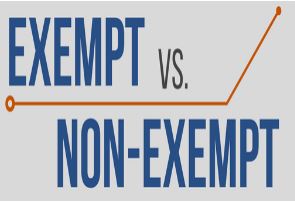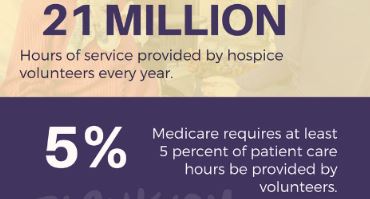
by editor | Oct 30, 2022 | Employee Onboarding, Human Resources, Payroll
The Fair Labor Standards Act (FLSA), enacted in 1938, has four major provisions: regulations for minimum wage, overtime pay, record keeping and child labor law. It also introduced standards for exempt and non-exempt employees. As it relates to the FLSA, exempt means free from an obligation of overtime pay. Note that FLSA regulates the Federal standards; the states may have different regulations in each of these areas.
What is an exempt employee?
Exempt employees are not eligible for minimum wage, overtime regulations, and other protections that are extended to non-exempt employees. Exempt employees receive a set salary every pay period. Exempt employees are typically salaried workers and often fill executive, supervisory, or administrative positions.
Which employees are covered under the FLSA law?
Enterprise Coverage: If a business is covered then all employees of the business are entitled to FLSA protection. What businesses are covered under enterprise coverage?
- Business has at least two employees and does sales of at least 500,000
- Named enterprise coverage: Hospital, business providing medical or nursing care for residents, school, preschool, or public agency, whether private or non profit
Individual Coverage: Individual employees in an organization may be entitled to FLSA protection even if the entire organization is not entitled to FLSA protection
- Individual is engaged in activity that involves working across state lines (interstate business) on a regular basis
- Domestic service workers (e.g., housekeeper, cook, babysitter)
Should an employee be classified as exempt or non-exempt?
- An employer should consider all employees as non-exempt and overtime eligible unless they can meet a specific exemption under federal or state law
- An employee who remains in the same job position should not move back and forth between exempt and non-exempt. Further, an employer cannot decide that they want to make an employee exempt. The regulations determine FLSA classification.
- Job title does not determine classification
Employers must correctly classify their employees as exempt or non-exempt or they run the risk of accruing compliance violations.
Can any worker qualify as an exempt employee?
An employer may wish to classify all employees as exempt employees – in this way avoiding the requirement to pay time and a half for overtime hours worked. However, not all employees are eligible to be classified as exempt employees.
The Department of Labor (DOL) has established guidelines to determine who is eligible to be considered exempt. The qualifications generally fall into three categories: salary exemption, nature of payment, and job duties. An employee must pass the tests in all three categories to qualify for exempt status.
Exempt employees test #1: total earnings
The first test to qualify an employee for exempt status is that the employee must earn the salary threshold set by the FLSA to be exempt. The minimum salary threshold of the FLSA changes every year. In 2021, the required minimum employee compensation to have exempt status was $684 per week ($35,568 per year). This salary threshold must be met regardless of being part time or full time. If the salary threshold is not met, the employee may not be classified as exempt (with an exception for teachers, doctors, and lawyers).
Exempt employees test #2: nature of payment
The second test to qualify an employee for exempt status is that the employee must be paid on a salaried basis, where compensation is not reduced due to quantity or quality of work.
Exempt employees test #3: job duties
The third test to qualify the employee for exempt status is whether the employee meets the job duties that qualify for exempt status. There are only certain job duties that qualify an employee for exempt status. These job duties involve a higher level of expertise or knowledge or require the employee to hold certain professional roles. There are several categories of job duties exemptions:
Executive exemption: employees who would qualify for an executive exemption would
- Regularly supervise employees
- Be responsible for managing part of the business
- Play a role in hiring employees or in delegating tasks
Administrative exemption: employees qualifying for an administrative exemption would
- Perform office jobs directly related to business operations or management of the organization and its customers
- Exercise independent judgement over business decisions
Professional exemption: employees qualifying for a professional exemption would
- Perform job duties that require specialized education
- Have a college degree or higher in their field
Computer exemption: employees with this exemption would
- Have a computer related role
Outside sales exemption: employees qualifying for this exemption would
- Have a primary duty of making sales or securing contracts or orders
- Conduct their work outside of the business’ premises
Where can you find out more?

by editor | Oct 29, 2022 | Human Resources, Payroll
How should an employer handle unclaimed wages?
An employer may find that an employee fails to cash a paycheck. Most often, this occurs with the final pay check. These “unclaimed wages” may not be treated as “found money.” When an employee fails to pick up a final check or fails to cash a check these unclaimed wages may become a form of “abandoned property.”
When is property considered abandoned?
Each state has its own definition of what it specifies as the abandonment period. That is, the time that each state requires that property must lay dormant before it is considered abandoned varies from state to state.
Once the unclaimed wages are considered abandoned, the employer must pay these unclaimed wages over to the state where the person last worked. The state steps into the shoes of the “lost owner” and takes ownership of the property until the rightful owner is found.
The state laws governing abandoned property are known as esheat laws because the property “escheats,” or reverts to the state and is not kept by the employer. Escheat laws are intended to give the employee an opportunity to claim the funds without having to track them down through corporate mergers or relocations,. Instead, the employee can go to the state to locate and claim the funds.
How long should an employer retain the funds?
Before an employer does anything with the unclaimed wages, the employer should check state laws to see how long the wages must be held, the employer’s obligations for locating the owner, when the employer must report the unclaimed wages to the state, and where the report must be sent to. In some states the wages are sent to the treasurer’s office. In other states the wages are sent to the attorney general’s office. States generally require that the employer holds the funds for at least one year.
Trying to locate the employee
Once an employer identifies unclaimed wages, the employer cannot simply transfer these funds to the state. The employer is obligated to make efforts to locate the employee. Employers must demonstrate that they have taken steps such as sending a tracked mailing (e.g., certified letter or UPS) to the employee’s last known mailing address or other method of contacting the employee using their last known contact information.
Most states require the employer to wait a minimum of six months after making these attempted notifications. Once the employer has complied with the statutory requirements – and can demonstrate that in the filing with the state – the funds may be returned to the state.
Reporting and remitting funds to the state
States have different reporting deadlines in the year. Some states use a date early in the following year after the dormancy requirement is met. Other states have a more accelerated deadline which would require advanced planning to ensure the deadline is not missed.
State unclaimed property laws also have detailed requirements, that vary by state, for remitting the funds to the state and for required supporting documentation.
Summing it all up: What is required of the employer?
Each state has its own unclaimed property rules and requirements.
Step 1: Document every contact you made with the employee
Most states require employers to show due diligence that they made all efforts possible to reach out to employees and give them the funds that they are owed in an attempt to keep unclaimed wages from becoming abandoned property
Step 2: File an annual report with your state
States typically require the employer to file an annual report including the employee’s name, last known address, amount and payment date of the unclaimed check, and the date of last contact with the employee
Step 3: Send the unclaimed wages with the report
With the report, the wages must be sent to the state. The state holds the money indefinitely (until claimed). The employer’s responsibility for paying the wages ends once the employer submits the wages and the report to the state.
Where can you find more information?
Recall that these laws vary by state and each state has its own requirements.
- National Association of Unclaimed Property Administrators (NAUPA) webpage has links to state websites: https://unclaimed.org/
- Search by state name and word “escheat”

by editor | Oct 28, 2022 | Employee Onboarding, Human Resources, Human Resources, Payroll
When should a worker be classified as an employee versus as an independent contractor?
What is the difference between these two types of workers? Why is it important for a hospice agency to properly classify the workers who are providing services? Why is it important to determine whether the workers providing services are independent contractors or employees?
Why would an employer want to classify workers as independent contractors instead of employees?
A business must withhold income tax, withhold and pay social security and Medicare, and pay unemployment taxes on the wages paid to employees – but not those paid to independent contractors. By classifying workers as independent contractors, an employer can avoid payroll taxes, unemployment insurance and workers compensation coverage. The employer can also save on the cost of all the benefits that are offered to employees but are not offered to independent contractors.
Are there consequences to misclassifying workers?
The IRS is increasing its efforts on auditing companies, with a particular focus on worker classification. The liability from an employment tax audit that identifies misclassified workers may be quite significant. A business that classifies workers as independent contractors instead of employees may be subject to retroactive tax withholding, penalties, and interest.
How can an agency differentiate between an employee and an independent contractor?
An employee is typically a person who is providing services where the employer controls what services are provided and how the services are provided. Specifically, the employer has the right to control the details of how the worker performs the tasks. There are three key areas to consider when evaluating whether a worker is an employee or an independent contractor:
- Behavioral control: Is the worker free from control or direction over performance of the tasks? Or, does the employer have the right to control how the worker performs the tasks?
- Financial control: Is the worker engaged in independently established business or occupation? Or, does the employer control the financial and business aspects of the worker’s job? For example, does the employer control how the worker is paid? Does the employer provide the supplies and the tools that the worker requires to complete the tasks?
- Relationship between the parties: Does the employer provide the worker with benefits such as insurance, vacation pay, or pension plan? Are the services that are performed a key aspect of the business?
By considering the different aspects of behavioral control, financial control, and the relationship between the two parties, and employer can determine whether a worker is more appropriately classified as an employee or as an independent contractor. Each of these three key areas involves multiple factors. Determination of whether a worker is an employee or an independent contractor is not an objective test and some of the factors are more important than the others, depending upon the industry and type of independent contractor being evaluated.
Where can you find out more?

by editor | Oct 21, 2022 | Compliance and Regulatory - Directors, Recruitment and Retention, Rules and Regulations - Nurses
What is a hospice volunteer?
Hospice volunteers are key contributors to a hospice agency. The hospice movement was started with volunteers and there are now more than 460,000 volunteers nationwide. To retain the initial spirit of hospice, Medicare requires that volunteers must provide services that equal at least 5% of the total patient care hours of all paid hospice employees and contract staff. Hospice volunteers are used to perform day-to-day administrative tasks for the hospice agency or in direct patient care roles.
Where can you recruit to find volunteers?
How should a hospice screen potential volunteers?
There are a number of areas the hospice agency should consider when screening potential hospice volunteer’s:
- What is motivating the potential volunteer?
- What skills does the potential volunteer have?
- How much time does the potential volunteer have available?
- Is the potential volunteer willing to complete any necessary training?
- What is the potential volunteer’s degree of comfort with concepts surrounding death and dying including death, loss, grief, and bereavement. Does the potential volunteer have a healthy adjustment to significant loss?
- Does the potential volunteer have a capacity for empathy and sensitivity?
Considerations for retaining volunteers
If your agency has a wonderful team of volunteers, you want to be sure not to lose this group. How can you increase the chance of retention? Just like employees, retaining volunteers takes effort! Here are some tips for increasing the chance of retaining your volunteers:
- Hospice volunteers need to believe in the hospice mission.
- They should see an opportunity for personal or professional growth
- Volunteers should feel needed and feel that they are contributing – the the agency or to the patients that they care for
- Volunteers should feel supported by the hospice agency staff
- Volunteers should be able to share the emotional events that they may experience while they volunteer

by editor | Oct 20, 2022 | Compliance and Regulatory - Directors, Reports
What are hospice volunteers?
The hospice movement was started by volunteers and there are currently more than 460,000 hospice volunteers nationwide.
To retain the volunteer-based essence of hospice, one of the Medicare conditions of participation requires that hospices incorporate volunteer services into their daily patient care and operations routine.
Is there a requirement on the number of hospice volunteer hours?
Medicare requires that volunteer must provide services that equal at least 5% of the total patient care hours of all paid hospice employees and contract staff. Read more about this requirement here: What is a hospice’s volunteer requirement?
How is the Medicare 5% requirement calculated?
The percentage of volunteer time is calculated in three steps:
- Step 1: Calculate the sum of volunteer direct care patient hours plus volunteer bereavement support patient hours plus volunteer administrative hours. See What is a hospice’s volunteer requirement? for clarification on these various types of volunteer hours and activities as well as clarification on what volunteer activities may be applied for use in this calculation.
- Step 2: Calculate the sum of employee direct care patient hours plus contractor direct care patient hours
- Step 3: Divide the number in Step 1 by the number in Step 2 and multiply by 100. The result is the percentage of volunteer hours
What activities performed by hospice employees or contractors are included?
Similar to the limitations placed on volunteer activities that may be included for the purposed of this Medicare match calculation, not all activities performed by a hospice’s employees or contractors are included in Step 2.
Hours for the following staff are included in the calculation (though others may be included as well): nurse, social worker, physician, physical therapist, hospice aide, chaplain, bereavement counselor
- All direct care activities are included in the calculation
- Telephone calls to patients, families, or surviving family members are included
- Staff education time is not included
- IDG time is not included
Where can you get more information?
Read more about hospice volunteer requirements: NHPCO Hospice Volunteer FAQ





